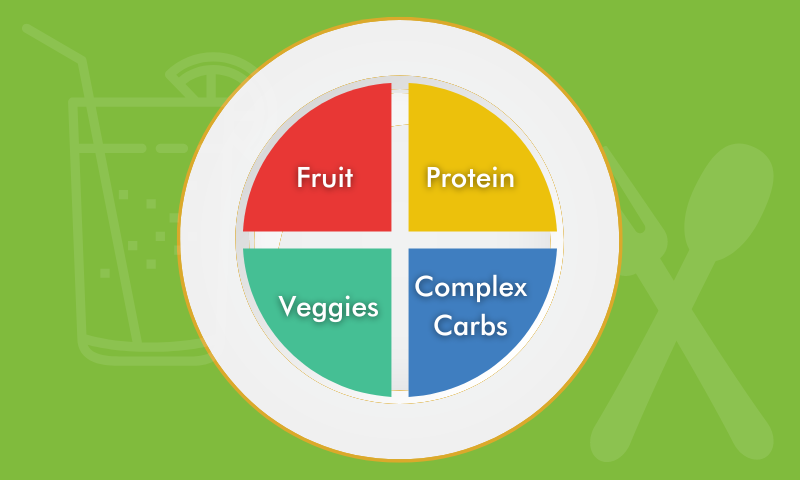Losing weight can often seem like a never-ending battle, full of triumphs and setbacks. One common challenge is deciding what to eat. New fad diets constantly emerge, which can be confusing and leave people wondering, “Which diet is best for me?” Fortunately, there are some tried and true methods for selecting a healthy eating plan that can promote weight-loss while incorporating foods you enjoy.
A highly effective method that many people find helpful is known as the “Plate Method.” Instead of wrestling with the decision of which diet to follow, this approach offers a simple visual guide to ensure your meals are well-balanced and provide your body with the necessary nutrients. Using a small salad plate for all your meals can help you incorporate portion control, making it easier to achieve your weight-loss goals.
Visualize Your Plate
The plate method is a straightforward concept: divide your plate into sections and fill each section with foods that support your health and wellbeing. Start by filling half of your plate with a variety of vegetables and/or fruits. The other half should be divided into two sections: one for a high-quality protein source such as meat, eggs, cottage cheese or legumes, and the other for a complex carbohydrate like whole-grain pasta, quinoa, brown rice, etc.
Healthy Meal Ideas for the My Plate Method
Need some inspiration to help you get out of a food rut and eat healthier? Here are some simple ideas for each meal of the day. Keep experimenting with what you like!
Breakfast
To start your day on a positive note, aim for a high-protein breakfast. This will kickstart your metabolism and help keep hunger at bay. Here’s a suggestion for a healthy breakfast plate:
- Half a cup of sautéed mushrooms (vegetable portion)
- Two eggs, any style (protein portion)
- Half a cup of berries or melon (fruit portion)
- Slice of whole grain bread or sprouted toast (whole grain portion)
Morning Snack
When it comes to snacks, focus on combining two of the food groups for a balanced boost: a vegetable or fruit + a quality protein or fat source.
For instance, you can enjoy a handful of veggies like carrots or a small bunch of grapes along with a slice of low-fat cheese or a few tablespoons of hummus or peanut butter. These nutritious options will not only keep you satisfied but will also help sustain your energy levels until lunchtime.
Lunch
To create a satisfying and nutritious lunch, consider building your meal around vegetables. Try a mixed green salad or a combination of fresh veggies and a low-fat dip. Enhance the protein content by adding in three ounces of lean meat such as skinless chicken breast or lean beef. For vegetarians, legumes are a great alternative. Include a few whole grain crackers for additional fiber. To dress your salad, you can use your favorite pre-bought salad dressing or try a drizzle of fresh squeezed lemon juice and olive oil.
Dinner
For dinner, continue the trend of aiming to fill half of your plate with vegetables. Grilled vegetables during the summer just hit different, adding a delightful flavor to any meal! Alternatively, roasting vegetables is also an easy option that doesn’t require a lot of babysitting. Just toss your preferred vegetables with one teaspoon of oil, herbs and spices. Alongside your vegetables, include a small sweet potato for starch, then complete your meal with a cut of lean protein or fish.
Conclusion
By adopting the plate method to balance the food groups, you can take the guesswork out of meal planning and make informed, health-conscious decisions for successful weight-loss. Give it a try and see the results for yourself!






